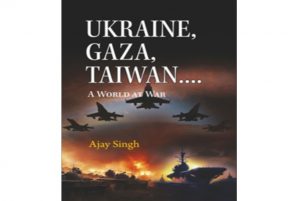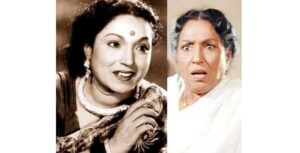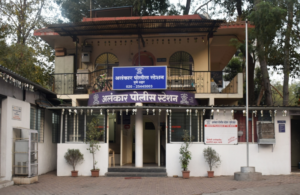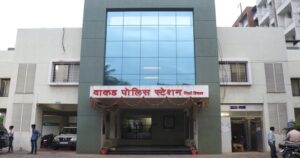BOOK REVIEW : “Valiant Deeds Undying Memories”, Stories From IPKF
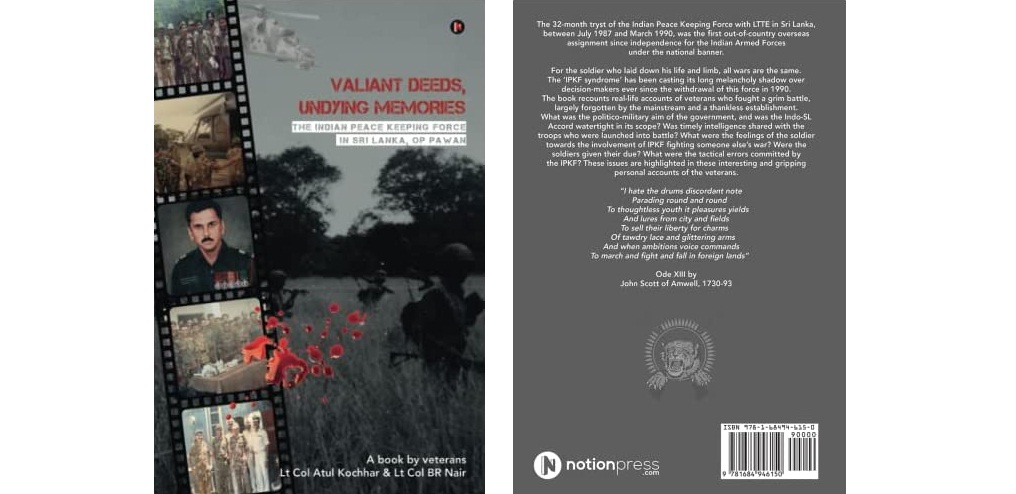
By Maj Gen Jagatbir Singh (Retd.)
War can be looked at in various ways, it can be looked at from top down based on an academic perspective or it can be a personal narrative looking at events as they unfolded across a canvas and finally ‘ looking up from the ground’ based on personal accounts and how they perceived their role.
“Valiant Deeds Undying Memories” by Lieutenant Colonel Atul Kochhar and Lieutenant Colonel BR Nair is a collection of accounts by veterans of the operations highlighting the human aspects of the conflict as they saw it at the unit level. The contributors are from all three Services and within the Army from all arms and services giving their views on events they saw unfold on ‘ground’ but now armed with the ‘insight of hindsight’.
“Theirs is not to reason why, its but to do and die’ can sum up India’s experience during Operation Pawan. To quote Lieutenant General SC Sardeshpande; “the IPKF had to strive between strategic perceptions and tactical reality of vicious and sudden counter insurgency action. Being the combat leader and diplomat simultaneously’. Lieutenant General Milan Naidu has also touched a similar sentiment and wrote about ‘its unique dimensions’, being the first ‘out of country overseas operation under the national banner’ and the military challenge lay in ‘overnight changing from peace keeping to peace enforcement’.
The book begins with an overview written by Lieutenant Colonel BR Nair in which he clearly states that ‘there was no attempt to forge political unanimity in both India and Sri Lanka prior to signing the accord’. He then covers the incident of 05 October 1987 when two LTTE leaders and fifteen cadres were caught on the high seas and their subsequent suicide by consuming cyanide at Palay airfield on 07 October when they realized they were to be handed over to the Sri Lankan government. This resulted in the opening of the military campaign against the LTTE.
Lieutenant Colonel RS Bhadauria recalls his experience as a young Captain of 10 PARA SF while being amongst the first to slither down during the heliborne operations at Jaffna University. The issues of lack of intelligence, poor communications and ammunition resupply are wonderfully documented, as is the bravery and courage of the officers and men including Lieutenant Colonel Dalvir Singh, Maj Birender Singh of 13 SIKH LI and the doctor Captain Ajit Veneyoor. Also highlighted is how his buddy Arvind Kumar refused to move back without him displaying ‘selfless courage under observed fire’. It is believed that the LTTE intercepted the army’s radio communication on the plans for the night.
Brigadier BK Unnikrishnan, then CO 12 Field Sub Group writes about Brigadier Manjit Singh, MVC the ‘tough’ Commander of 41 Infantry Brigade which led the advance from Palay airfield to Jaffna Fort in “My Style of Command”. He was fearless and demanded the best from his troops, led from the front but ‘would not suffer fools gladly’. “A thorough professional and demanding leader who would not tolerate any shortcomings”.
Lieutenant Colonel Manoj Channan then a young Troop Leader in 65 Armoured Regiment talks about mechanised operations. The Armoured Regiment and Mechanised battalions were split and operated in all Sectors. The challenges were the built up areas and terrain. He talks about the issues of communication with the infantry and shortage of crews due to casualties and the bravery of then Major Anil Kaul who was awarded a Vir Chakra but was severely wounded due to a RPG Rocket ricochet but carried on in an engagement for eighteen hours on 13 October 1987, ‘ in a state which included a missing eye and half his left hand’.
Lieutenant General Kamal Kumar writes about his experience as Adjutant 10 Air OP flight tasked to support 54 Infantry Division. The flight had moved from Allahabad to Hakimpet, but had moved back to Allahabad due to the uncertain situation. Their tasks included engaging the LTTE by directing artillery fire, surveillance, battle field reconnaissance and casualty evacuation.
Subsequently, they fitted armed MMG’s on the Chetak helicopters which proved their worth in operations.
Wing Commander CD Updhayay writes of the movement of 118 Helicopter Unit from Guwahati to Jaffna in October 1987. The Heliborne Operations his unit was involved in and the manner in which he dealt with the small arms fire which had damaged his ‘fuel pipe’ of his MI-8 .He also highlights the indifference of the local Air Force Commander and the manner in which the then AOC-in-C Eastern Air Command Air Marshal Sinha ensured he was awarded the Vir Chakra.
Commander AJ Joseph writes about the naval operations including operations by the MARCOS; the marine commandos. The Navy destroyed 76 militant boats, apprehended 139 boats and caused 336 casualties at sea. They also transported a large number of troops, vehicles, stores and refugees.
The “Mettle Men”, tells the story of Captain SS Sahota of 5 MADRAS; given the title of ‘butcher’ due to his success against LTTE. On 19 December his convoy was ambushed and he took a burst of fire. Semi-conscious he along with his buddy Kunjomon emptied his carbine rounds on the LTTE cadre who were approaching their overturned vehicle. When the QRT came to rescue them they’ found to their horror that their fingers slid into his head’.
“The Spanner That Worked” written by Colonel VK Rajendran is about his experience as the OC of a Troposcatter Workshop during the operations. Their locations remained geographically isolated and as he said remained’ unseen, unheard and therefore unsung’. He gives out the experiences of various officers and challenges of maintaining equipment.
Commander Vinayak Agashe, was commanding the submarine INS Vagli, he wonderfully captures the conditions of ‘the Silent Service.’’ ‘Once inside there is barely headroom for a tall man to stand upright’; ‘there is no privacy on board with some controls even located in the toilet‘. What is fascinating is the spirit and camaraderie that exists a unique bond which comes out particularly when the chips are down, and how the crew managed to stabilize the situation when INS Vagli stared plunging to’ crushing depths’ and then misbehaved again in the opposite direction.
“A Friendly Near Miss” is an account by Brigadier Rajiv Chibber of 12 GRENADIERS then a young Captain. His battalion was tasked to capture Point Pedro on 07 November 1987 were helilifted from Jaffna. He writes about the adverse weather conditions where ‘bedding in’ of mortars was a challenge, the ‘near miss’ occurred when the tail unit of a mortar broke away and the round landed near a soldier ferrying a camouflage net. Luckily due to the soft soil and rain the bomb had sunk into the wet sand where it exploded. There is also a fascinating account of their being targeted by the LTTE from a Toyota pickup truck. Fortunately, they were able to eliminate all occupants of the vehicle in what was ‘the longest three minutes’ as rounds were ricocheting off his helmet but he had lost his radio operator.
Captain Deepak Aggarwal, VrC has written about his experience commanding a seaward defence boat T-56, ‘a very small sized ship with minimum facilities’. He writes about the landing of Para Commandos on the night of 02/03 November at Moolai Beach and the fire support given to them due to the MI- 25 supporting the operation having to be pulled back having been hit by ground fire. The naval craft now operating without the cover of darkness and close to the shore was also subject to LTTE fire but they were successful in their mission.
Colonel Rajiv Batra writes about his tenure as the Medical Officer with 19 MAHAR. The manner in which he was recalled from leave and how the battalion inducted from Kapurthala to Trincomalee, incidentally the first patient he treated was one of the ships hands with a Colles fracture, who he had to administer first aid to as there were instructions not to disembark any crew. The doctors had their own set of problems while treating patients in field during the intensity of combat and these have been wonderfully brought out.
“Vavuniya: Tigers Den” is an account by Colonel R Banerji who had taken over command of his battalion 6/8 Gorkha Rifles on 04 March 1989. This was after the loss of their CO, Colonel VK Bakshi, MVC, two JCO’s and eight soldiers, with seventeen soldiers having been injured during a cordon and search operation in Vanni Jungle. He talks of the manner in which they overcame this setback and how the battalion ‘was able to restore their pride and prestige and redeem their losses’.
Major General Binoy Poonen then Adjutant 13 MAHAR has written a wonderful tribute about Second Lieutenant Rajeev Sandhu of 7 ASSAM. He recalls his brief bit impactful interaction with him the night before his death, when Rajeev was passing through 13 MAHAR in Batticaloa area. Rajeev refused to have dinner while Captain Ponnen was still in office and waited for him till nearly midnight in spite of the fact that he had to leave at 0500 hours on 19 July 1988. When ambushed and badly wounded with both legs mutilated and bleeding profusely he still crawled out of the vehicle and engaged the LTTE with his carbine.
‘His death at four months of service left behind a legacy of courage, honour and exceptional bravery.’ Fittingly, many years later as GOC 57 Mountain Division General Poonen was able to develop a Park in his memory at Leimakong, Manipur.
“Searching Squares in Circles” is an account by Colonel then Major VK Rao of 1 JAK LI. He recalls a major cordon and search operation by his battalion in Vumyadi Jungle in Batticaloa Sector on 21 July 1989. He goes into the details of how his Company advanced to the second bound directly due to a navigational error and contacted the LTTE. While unable to establish contact with his own battalion he was in contact with the Brigade Headquarters and how the ‘calm and composed ‘Brigade Commander; Brigadier GK Duggal, remained in radio contact with him throughout the night of the encounter while they were able to eliminate and capture LTTE cadres as well as a lot of arms and ammunition and how he infused confidence in the Company and landed at the site of the operations by helicopter at first light.
Brigadier JS Grewal was the CO of 4 GARHWAL RIFLES, which was operating in Northern Sri Lanka. He covers various lessons learnt which included induction, fire discipline and the fact that the 7.62 SLR was no match for the AK-47 rifles. He also says that;” Brigade and units should not be at loggerheads but strive for the same objective”.
The last piece is by Colonel KS Ram Mohan who writes about the need for an IPKF memorial and how the establishment has’ downplayed the importance of this challenging overseas operation.”
The lessons learnt have benefitted our forces while in Counter Insurgency operations within our country. What also stand out today is the organized manner in which the IPKF was de-inducted from Sri Lanka in comparison to the US withdrawal from Afghanistan.
The book recounts real-life accounts of veterans who fought a grim battle, largely forgotten and needs to be read as it looks at a conflict from the ground upwards and not the other way around. ‘Operation Pawan’ also tells us that we can learn more from our errors than our victories. The challenge lies in the use of Armed Forces to set conditions for a political outcome. The fact that the Sri Lankan Army took almost two decades to brutally finish the insurgency underlines what the IPKF went through.


